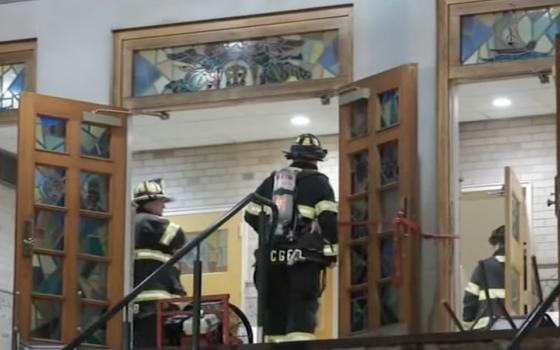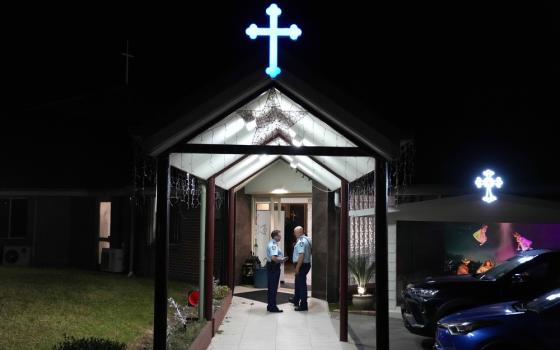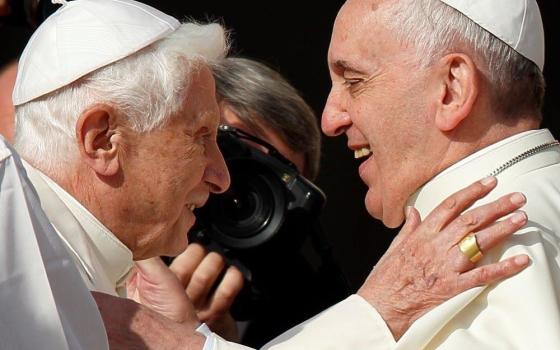THE SPIRIT OF VATICAN II: A HISTORY OF CATHOLIC REFORM IN AMERICA
By Colleen McDannell
Published by Basic Books, $26.99
Colleen McDannell, a history professor and author/editor of books on the Catholic influence in movies and a history of ideas about heaven, resides in Salt Lake City, a most unlikely place to expound upon Catholic culture.
In her latest book, she tackles the renewal, and sometimes the jolt, that the Second Vatican Council (1962-65) brought to American Catholics.
This is the familiar story of the council itself, how a new vision of church was forged despite opposition. She follows the debates about religious freedom, the language of the liturgy, and the laity’s role in an easy-to-understand digest of territory familiar to those acquainted with modern Catholic history.
If a good historian points out how everything comes from what happened before, McDannell ably meets that challenge: Vatican II was largely a response to what was already happening, evidenced by European liturgical experimentation, the collective memory of the horrors of World War II, the colonialism and mission work that brought the faith to all corners of the world, and, in America, the struggle of emerging ethnic groups who sometimes quarreled with their bishops about how to run their parishes. American Catholics also lived side by side with Jews and Protestants in relative harmony, and fostered few ambitions of imposing a Catholic political order on New World democracy.
McDannell explores new ground. She notes the stereotype of the large Catholic family was beginning to unravel even before the council and the subsequent argument over Humanae Vitae, Paul VI’s 1968 encyclical that reiterated the papacy’s opposition to the use of artificial contraception by married couples.
McDannell’s contribution is to show how those changes affected Catholics in American pews, including the opening of Catholics to 1960s antiwar and antiracism efforts and the mass exodus of nuns and priests.
In revealing how those changes affected her parents, Ken and Margaret McDannell, the focus is largely on Margaret, as she raises Colleen and her brother in a marriage that took her from hometown Erie, Pa., to Toledo, Ohio, the suburbs of Washington, D.C., southern California, Colorado and, finally, to Florida for retirement. The author hints that Ken’s job with the federal prison system was at times an unsettling migratory experience, yet one filled with opportunities to observe how Vatican II took root in different ways throughout the country.
She captures the regional differences in church life, as recounted in her family’s pilgrim experience. On the coasts, Catholicism retained more of a pre-Vatican II quality. It was the middle of the country -- she notes it is not coincidental that the National Catholic Reporter took form in Kansas City, Mo. -- where there was more opening to the laity and greater liturgical change.
McDannell is at her best in recounting the early Vatican II years, when the National Catholic Reporter was formed in large part to chronicle the changes about which she writes. Working with NCR accounts and newspaper and magazine features of the 1960s and ’70s, she describes the massive exodus of religious sisters, impatient with the pace of renewal, and priests, who began to wonder if the life of the laity extolled in Vatican II documents and the lure of family life were worth exploring for themselves. Her account of folk Masses reminds me of my post-Vatican II experience as a 10-year-old in my suburban Long Island, N.Y., parish listening to a Communion reflection of Bob Dylan’s “The Times They Are a-Changin’ ” -- indicating that they really were.
When McDannell’s family moved to suburban Denver, they encountered a parish led by Fr. Bill, who encouraged the informal moniker. He supervised a new modernist-style church building. Architectural details -- the new church had no altar rail -- are cited by McDannell as a sign of the new inclusivity the parish fostered. Modernist architecture in churches built at the time embraced open space, much in contrast to older European-style churches filled with statues and artifacts.
Fr. Bill fostered guitar Masses and small faith communities that challenged the sterile individualism of exurbia. He chose not to build a Catholic school, a deliberate decision made to encourage his flock to be part of the wider culture, not to educate their children in separate enclaves. He encouraged an active parish council, inviting the laity to participate in all aspects of church life. He dissented from Humanae Vitae and its teachings from the pulpit. And then, like so many progressive priests of that era, he left the priesthood.
This book’s strength is in its anecdotes that signal how deep Vatican II’s impact has taken root. Our grandparents may not have known much about the Council of Trent, but they were raised in a church forged by that event. Today, American Catholics are the fish swimming in the sea of Vatican II thought, even though, 45 years later, it is not a part of any personal memory for those under 50. Even the most conservative of Catholics invoke themselves as the people of God, resistant to the kind of hierarchy they don’t like. The toothpaste is out of the tube and won’t go back in.
Margaret’s spiritual search is emblematic of women of the Greatest Generation, and it comes alive in this book. So does the history, weaving in the currents of the wider society with what was happening in the church and the family. But I’m left wondering: What about Dad? (We’re told Ken was a convert to Catholicism, imbued with a Kennedy-style idealism in his view of work in prison rehabilitation, but we don’t learn much about his spirituality.)
And what about the author? I would have liked to know what she thought of the guitar Masses, about how Vatican II spirituality influenced her life. It obviously did, because she can’t seem to shake reflecting upon Catholic culture from her scholarly enclave in Utah. A definitive look at baby-boomer Catholicism awaits.
Her writing style is at times oddly distant, a tension for a book that combines scholarship with family memories. For the most part, this is a memoir raising questions, rather than answering them. Much is left unsaid about the dynamics of the lives that forged the spirituality of this particular post-Vatican II family.
However, what McDannell lacks in the novelistic genre of a memoirist, she succeeds as a historian. This book is worthwhile, if only for the wide perspective it provides on what is too often seen today as a long-ago gathering of men dressed in red in a cavernous hall set far away from American Catholic everyday life. McDannell’s social history proves that Vatican II cannot be relegated to a book on a shelf filled with agreeable sayings. We remain children of its legacy, like it or not.
[Peter Feuerherd is director of communications for the diocese of Camden, N.J., a frequent writer in the Catholic press, and author of HolyLand USA: A Catholic Ride Through America’s Evangelical Landscape.]




